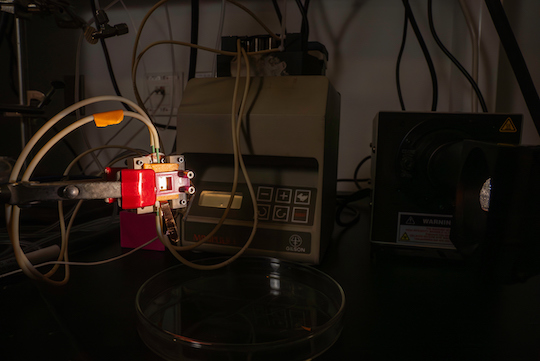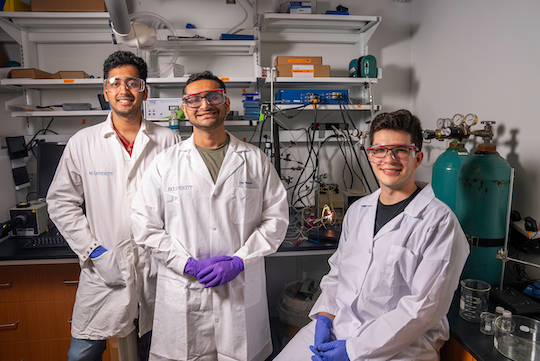Rice University’s researchers have unveiled a device that’s a game-changer in converting sunlight to hydrogen. Dive into “Nature Communications” from September 29, 2023, for the nitty-gritty on this innovation. “This is a pivotal moment in sustainable energy,” shares Jun Lou, the materials scientist leading the charge at Rice.

The device boasts a 6.7% efficiency rate, setting a new standard in solar-driven hydrogen production. Hydrogen is shaping up as a leading contender in the clean energy race, pushing us towards a greener future. The secret? A tandem solar cell that maximizes sunlight absorption. With a perovskite layer for visible light and silicon for infrared, it’s a well-thought-out design.

Lou breaks it down: “Our device is designed to make the most of every sunbeam, optimizing hydrogen output.” And here’s the best part: it’s not just groundbreaking but also budget-friendly, hinting at commercial potential. The team tackled the instability of perovskite with a protective layer, ensuring it stays functional under the sun. “Ensuring stability was challenging, but we’ve found a way,” Lou notes with a hint of pride.
Similar Posts
This achievement is a testament to collaboration, with experts from various fields coming together. In our global fight against climate change, innovations like this are more than welcome. The team’s vision doesn’t stop here; they’re looking at integrating this tech into broader energy systems. “We’re aiming for real-world impact, not just lab success,” Lou emphasizes.

Imagine a world where this tech powers homes and even cars—that’s the dream. While the initial results are promising, the team knows there’s more work ahead. It’s all about refining and ensuring this innovation stands the test of time. With the global momentum towards green energy, there’s a lot of support for endeavors like this. “Every experiment is a step closer to a sustainable future,” shares a researcher from the team.

The study also sheds light on the importance of backing renewable energy research. With dedication and resources, breakthroughs like this are within reach. Rice’s achievement is a beacon for researchers everywhere. As we pivot to a greener world, hydrogen production innovations are front and center. The dual-layer design showcases the team’s forward-thinking approach. Lou reflects, “Innovation is about improving and refining, not just inventing.”

The energy community is eager to see what’s next from these dedicated scientists. Their commitment to pushing boundaries in energy is evident. As the demand for clean energy grows, Rice’s device is setting the pace. “We’re on the brink of something transformative,” muses a Rice researcher. The next few years promise exciting advancements in the energy sector. For now, all eyes are on Rice University and their stellar contribution to sustainable energy.















